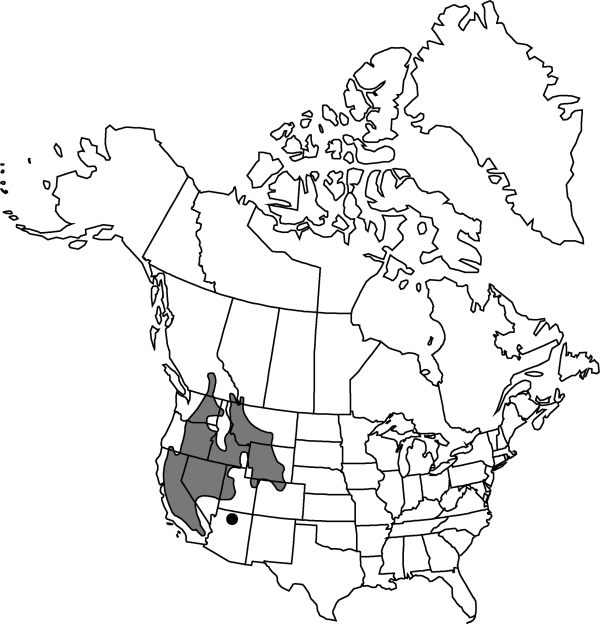Lewisia rediviva
Fl. Amer. Sept. 2: 368. 1814.
Taproots gradually ramified distally. Stems procumbent to erect, 1–3 cm. Leaves: basal leaves withering at or soon after anthesis, sessile, blade linear to clavate, subterete or grooved adaxially, 0.5–5 cm, margins entire, apex obtuse to subacute; cauline leaves absent. Inflorescences with flowers borne singly; bracts 4–7(–8), whorled, subulate to linear-lanceolate, 4–10 mm, margins entire, apex acuminate. Flowers pedicellate, disarticulate in fruit; sepals (4–)6–9, broadly elliptic to ovate, 10–25 mm, scarious after anthesis, margins entire to somewhat erose, apex obtuse to rounded; petals 10–19, usually rose to pink, sometimes lavender, sometimes with paler or white centers, or wholly white, elliptic, oblong, or narrowly oblanceolate, 15–35 mm; stamens 20–50; stigmas 4–9; pedicel (1–)3–15(–30) mm. Capsules 5–6 mm. Seeds 6–25, 2–2.5 mm, shiny, minutely papillate. 2n = 26, 28.
Distribution

w North America.
Discussion
Varieties 2 (2 in the flora).
Native Americans commonly ate the boiled roots of Lewisia rediviva.
Selected References
None.
Key
| 1 | Basal leaf blades clavate to narrowly oblanceolate, grooved adaxially; sepals 10-12(-15) mm; petals 15mm; stamens 20-30 | Lewisia rediviva var. minor |
| 1 | Basal leaf blades linear, subterete, not grooved adaxially; sepals 15-25 mm; petals 18-35 mm; stamens 30-50 | Lewisia rediviva var. rediviva |